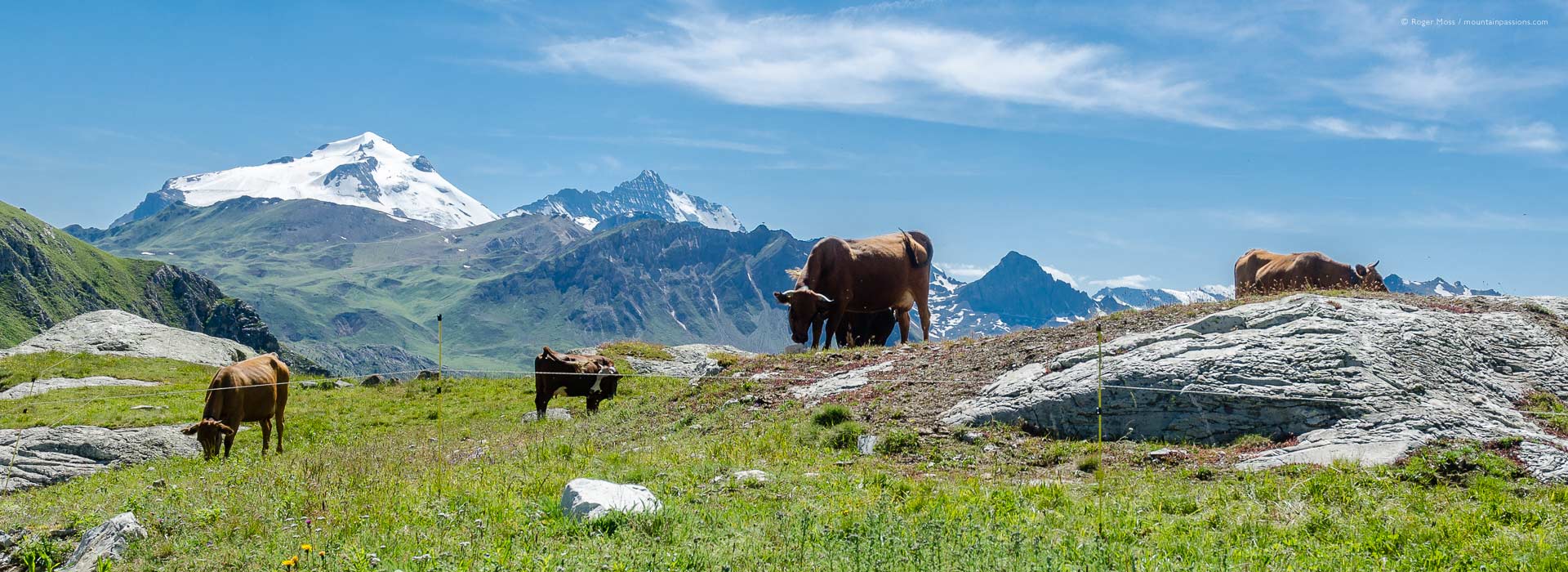The French National Parks
Looking after France’s unspoilt mountain areas
The ten officially-designated French National Parks are known collectively as “Les Parcs Nationaux de France”, and despite often being eclipsed in the media by long-established star visitor attractions, they nevertheless occupy an important place in the cultural identity of France (which remains the world’s most popular tourist destination). The parks are now recognised internationally for their exceptional natural qualities (including a combination of remarkable inland and maritime environments) and for the methods of regional management which have been established to ensure that they will conserve their richness for future generations.
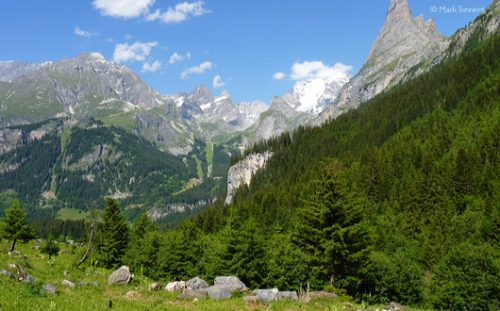
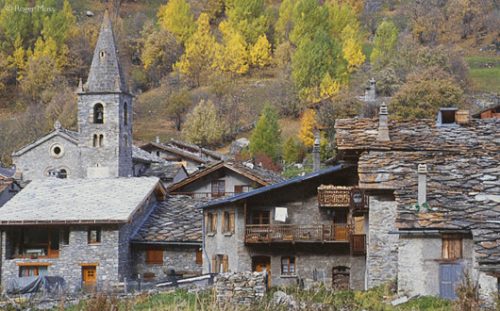
La Vanoise
Covering an area of 53,500 ha (between 1231 and 3855 m) and located in the department of Savoie (73), the Parc National de la Vanoise encompasses 29 communes with a total of 36 900 permanent inhabitants. The park is divided into 2 valleys: to the north the Vallée de la Tarentaise (crossed by the River Isère) and further south, the Vallée de la Maurienne (crossed by the River Arc).
The Vanoise was the first Parc National, created in 1963 primarily to prevent the disappearance of the Alpine ibex in France, and as a complement to the actions of its Italian neighbour, the Gran Paradiso National Park.
Flora : 1,200 species, 200 of which are considered remarkable. Numerous species are protected on regional, national, European and international levels.
Fauna : 1,600 Alpine ibex, 6,000 chamois, 120 nesting bird species (this is one of three major nesting sites in the Alps for the bearded vulture. Once again, numerous species are protected on regional, national and European levels.
A hikers’ paradise : 600 kilometres of hiking paths (including the GR 5, GR 55 and Via Alpina hiking trails), with 53 mountain huts or refuges. See our illustrated feature on the Vanoise Walking Tour written by leader Mark Tennant for more detailed information about walking and staying in the mountain refuges of the Vanoise.
Website: (English version) Vanoise National Park
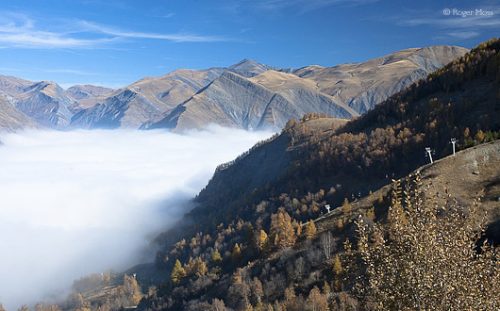
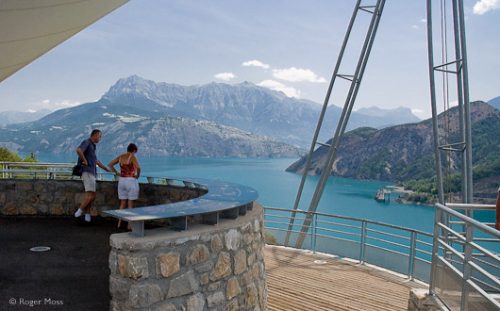
Les Ecrins
The Parc National des Ecrins was established in 1973 in response to sustained pressure from mountaineers, nature organisations and the French Alpine Club. Situated between Gap, Grenoble and Briançon, the main characteristic of the Ecrins national park is the presence of more than one hundred peaks exceeding 3,000m. altitude (with 20% of their combined upper surface area covered by glaciers), culminating in the Barre des Ecrins at 4,102m. Not surprisingly, the Park’s central zone can only be explored on foot.
A network of 700 km of footpaths is regularly maintained for professionals such as shepherds and refuge wardens, and to allow the public to access the high peaks and glaciers, in the company of experienced mountain guides.
Flora: Both fauna and flora are extremely rich, and have been the subject of many scientific studies. Over 1,800 different plant species have been identified, their diversity resulting from the different vegetation levels between 800m and 4,102m. Larches populate the lower slopes in the east of the park, while above the tree line Alpine junipers dominate the southern slopes (and rhododendrons are often established on north-facing hillsides). Around 168 plant species are considered to be of particular value, from protected species (including potentilla delphinensis – Alpine sea holly) to species listed in the French Liste Rouge of rare and endangered species (cotoneaster atlanticus – Briançon apricot).
Fauna: The extremely varied environmental conditions have resulted in a wealth of animal species (including over 350 species of vertebrates). The Mediterranean pine vole and ocellated lizard, both species from southern climes, live alongside the snow vole and ptarmigan, which are survivors from the last Ice Age. However, it’s probable that only a fraction of the invertebrate population has so far been discovered.
When the Park was created, there were only 3,000 chamois in the area; there are now nearly 15,000 of these iconic animals. Reintroduction programmes have also brought the ibex back in strength, and almost 600 animals can now be glimpsed on the rocky mountainsides. The golden eagle, which symbolises the park, has been the subject of regular censuses since 1985. Larger birds such as bearded vultures, griffon vultures and black vultures can also be seen.
Although animals are sensitive to disturbance, and the impact of winter sports is tightly controlled to help conserve natural habitats, the park’s location and diversity of landscapes has prompted both the lynx and the wolf to return of their own accord.
The above information is sourced in part from a useful leaftlet (available in English) downloadable as a .pdf file from the Ecrins Parc National website.
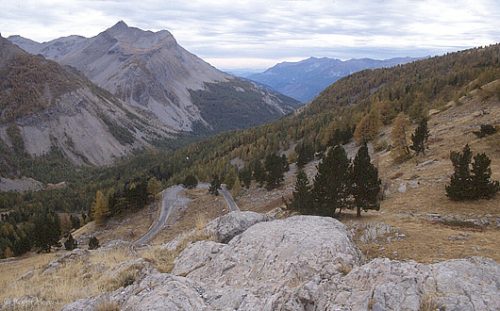
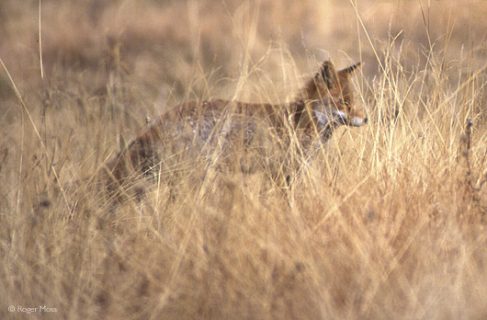
Le Mercantour
Set beside the Italian border, the Mercantour is the last promontory of the Alps in southern France before its sudden plunge into the Mediterranean. At the 3143m summit of Gélas, highest peak in the Mercantour, you are just 50 km from the sea as the crow flies. Covering an area of 68,500 ha (at altitudes between 490 m and 3143 m) and located in the Alpes-Maritimes (06) and the Alpes-de-Haute-Provence (04), the park encompasses 28 communes, with 17,700 permanent residents.
Flora: With a vast mosaic of habitats at various altitudes, and under varying geological and climatic influences, the Mercantour can boast more than 2000 plant species (of around 4200 known to exist in France). Of these, 220 are considered to be very rare and forty endemic species are found nowhere else in the world, including the many-flowered Saxifrage (Saxifraga florulenta) which has become a fitting emblem for the Mercantour.
Fauna: From prestigious species such as the ibex, golden eagle, wolf and bearded vulture to the discrete world of insects, wildlife in the Mercantour is has a rare diversity. Researchers have already documented several hundred species (some present here since the late glacial period), including 197 vertebrate species, of which 53 are threatened. Without the conservation actions taken by the national park some of these species would already have disappeared.
Website: Mercantour Parc National
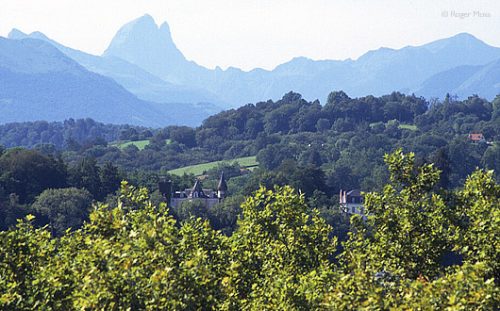
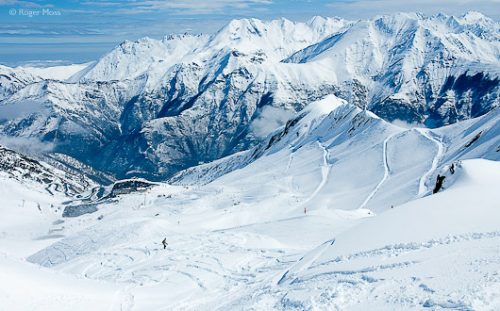
Pyrénées
The Parc National des Pyrenées (the third French national park) was established in 1967. The area stretches over two departments (Pyrénées-Atlantiques and Hautes-Pyrenées) and two regions (Aquitaine and Midi-Pyrenées), from the Gave d’Aspe to the Neste d’Aure, along a crest which forms the frontier with Spain. The sole national park in the French Pyrenees, it protects 45 707 hectares, never descending below 1000 meters and rising to 3298 meters at the Pic Long Vignemale.
Flora: Pyrenean flora is diverse, with readily-visible layering of plants as the altitude increases. The mountain forests up to 1800m contain beech, fir and Scots pine (according to the aspect), while in the sub-Alpine region there’s rhododendron, birch and mountain ash. Characteristic flowers such as lily and iris exist up to 2400m. At altitudes up to 2900m, the only tree species which survive are dwarf willows, which cling among the rocks. The vegetation (low to the ground) includes the stemless catchfly, fragrant poppy, and saxifrage. Above 2900m only a few lichens and algae can survive.
Fauna: Some 4,000 species, including 250 vertebrates, 64 mammal species (with 5600 chamois) plus 200 bird species – including bearded vultures and golden eagles.
Website: Parc Pyrenees
